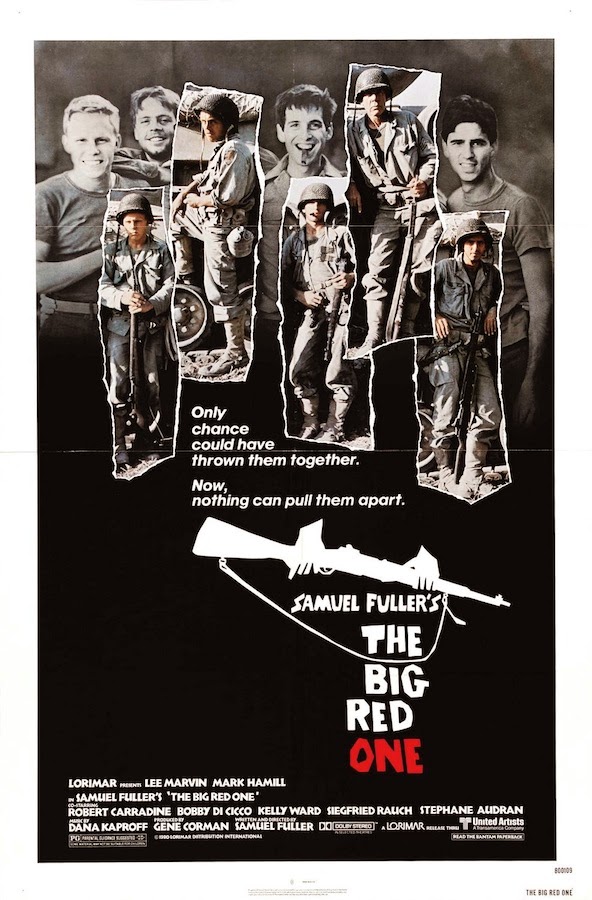Maverick B-movie director Samuel
Fuller returned from a decade-long hiatus with The Big Red One, a World War II melodrama based upon Fuller’s
real-life experiences as a soldier in the U.S. Army’s First Infantry. The
picture closely follows a single squad’s experiences as the squad moves from
one deployment to the next, spanning D-Day to the end of the war. Episodic,
heavy-handed, and meandering, the picture is deeply flawed but nonetheless
interesting. Among other things, The Big
Red One doesn’t feature any commanding officers—the highest-ranking major
character is a sergeant—so it’s very much a grunt’s-eye-view of combat. The soldiers
in this movie follow orders without a sense of the overall conflict’s larger
political and/or strategic significance, which makes the brutality the soldiers
witness (and commit) seem especially gruesome. Additionally, Fuller has a great eye for
locations, putting viewers right there in the muck and rubble with physically
and spiritually existed Yanks as they plow through seemingly endless waves of
enemy combatants. Because Fuller was not a subtle filmmaker, however, the movie’s
realistic textures clash with the clunky themes of the storyline.
For instance,
the main emotional hook involves the squad leader, Sgt. Possum (Lee Marvin),
who was traumatized years earlier when he unknowingly killed a German soldier moments
after the World War I armistice was signed. Forever cognizant of war’s costs,
Possum has zero tolerance for cowardice—and zero tolerance for avoidable
bloodshed. Fuller pays off this character arc in the least believable way
possible, ending the picture on a false note. Similarly, a subplot about Pvt.
Griff (Mark Hamill) turns trite as Griff overcomes his initial cowardice during
a highly unlikely moment of heroism.
Despite all of its narrative excesses and
shortcomings, The Big Red One has a
hell of a climax, because—as Fuller’s squad did in real life—the movie squad
liberates a concentration camp. Demonstrating uncharacteristic restraint,
Fuller evokes the soul-shattering horror soldiers must have felt upon
encountering the depths of human evil. Photographed in rich color by Adam
Greenberg and held together by Dana Kaproff’s efficient musical score, The Big Red One is a grand old mess of a
personal statement, which might explain why the film has suffered so much at
the hands of outside forces. Although Fuller’s original version ran nearly
three hours, Warner Bros. cut the picture to 113 minutes for its initial
release. Commercial failure and complaints from Fuller about tampering
followed. Years later, well after Fuller’s death in 1997, a restored version
running 162 minutes was released to much approval by critics.
In any form, The Big Red One is noteworthy because
it’s so clearly a passion piece, and because the best moments ring true. As for
Fuller, he remained undaunted by the box-office stillbirth of The Big Red One, directing one more
American feature—the relentless race-relations melodrama White Dog (1982)—before transitioning to the small European films
that comprise the twilight era of his long and singular career.
The Big Red One: FUNKY


No comments:
Post a Comment